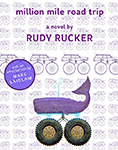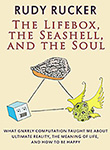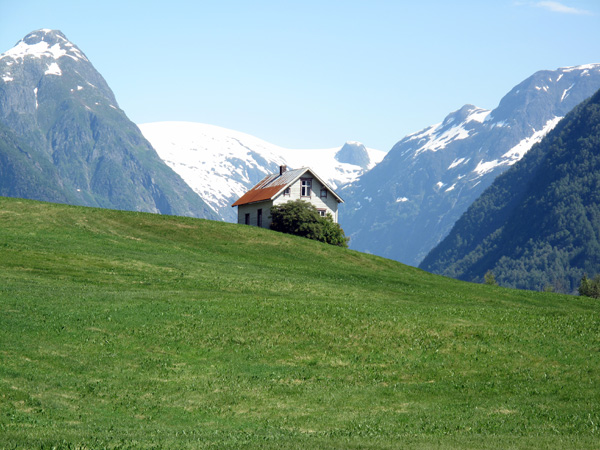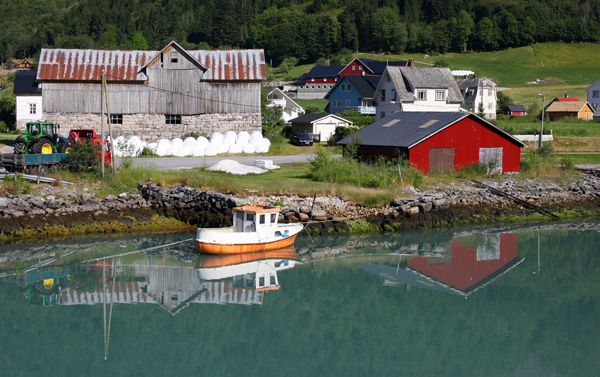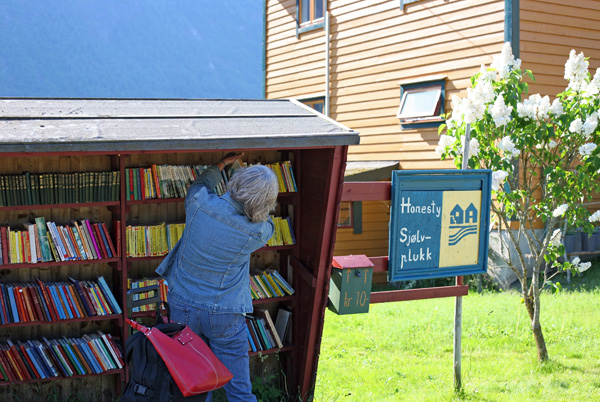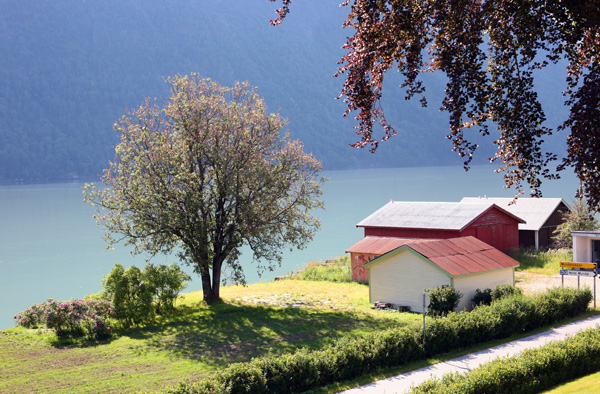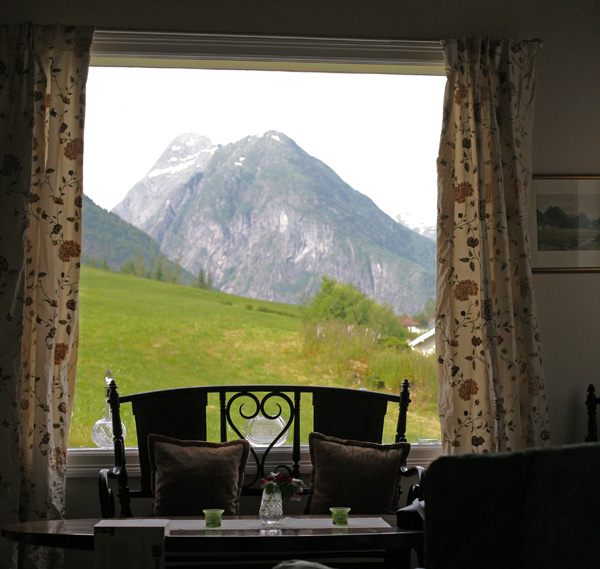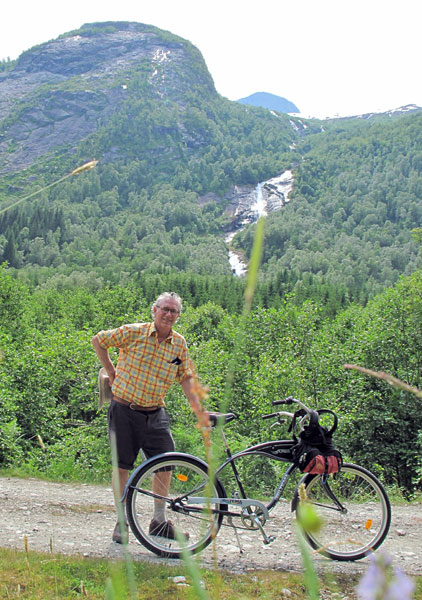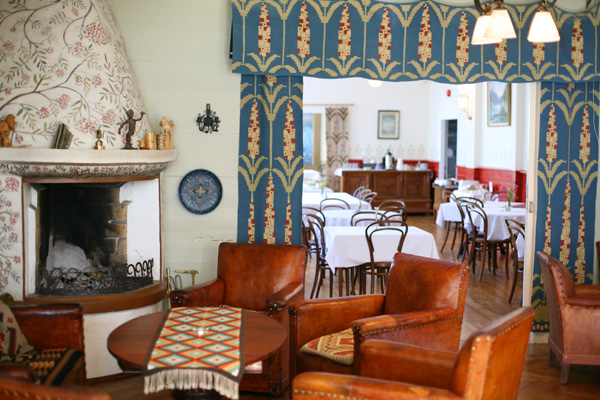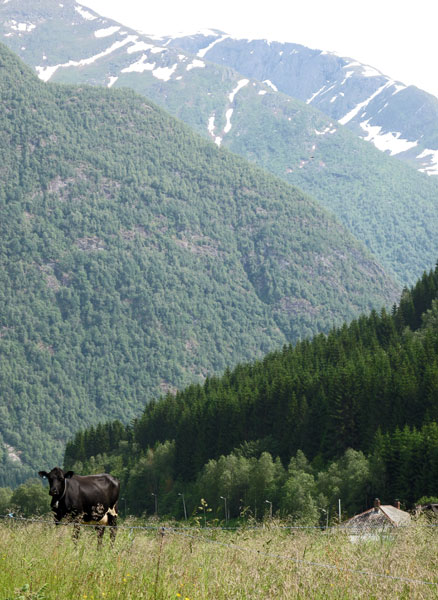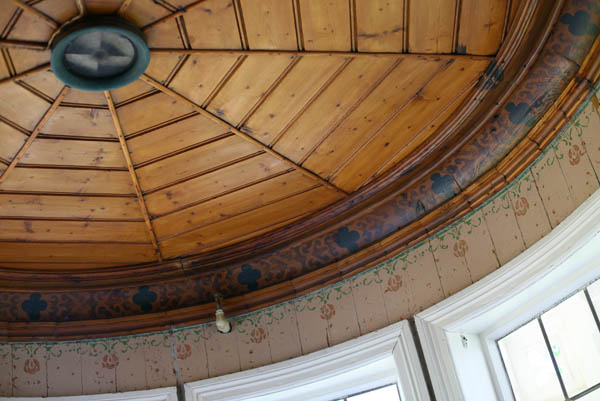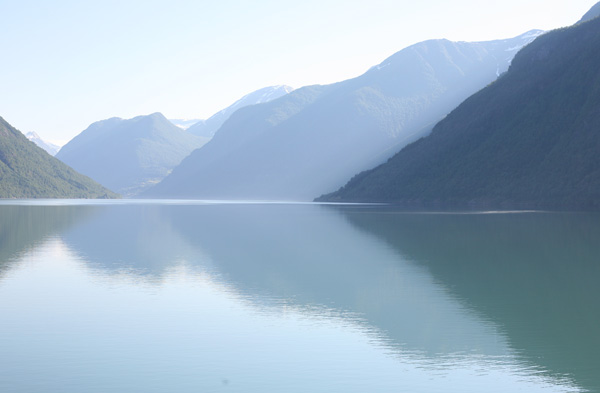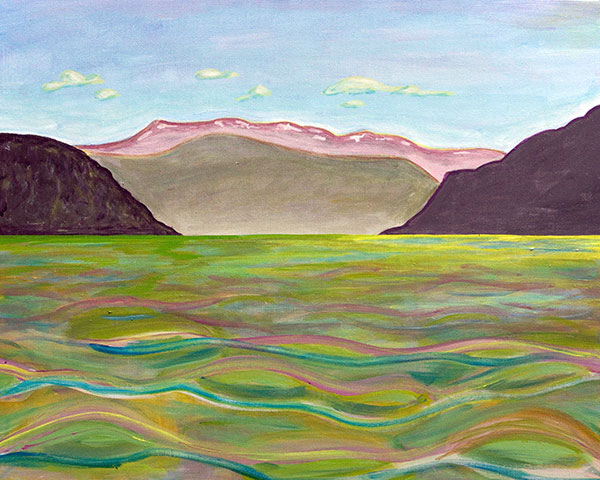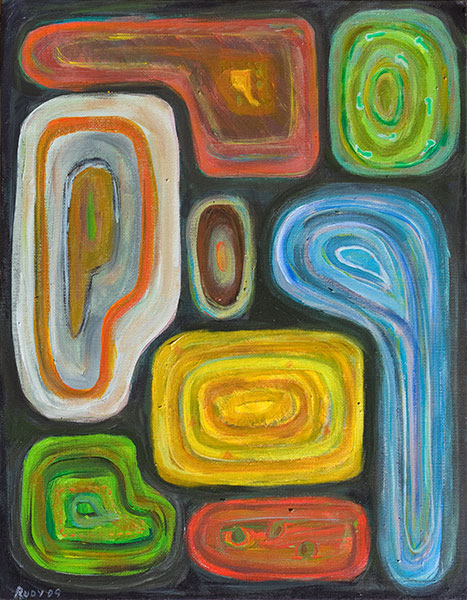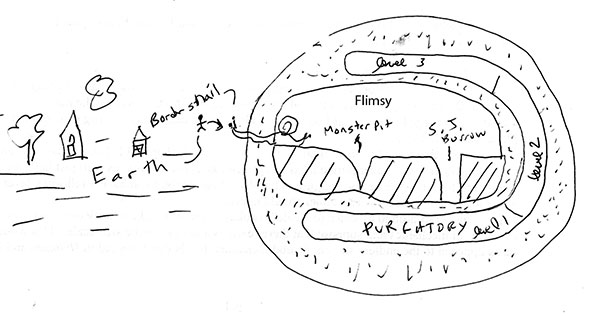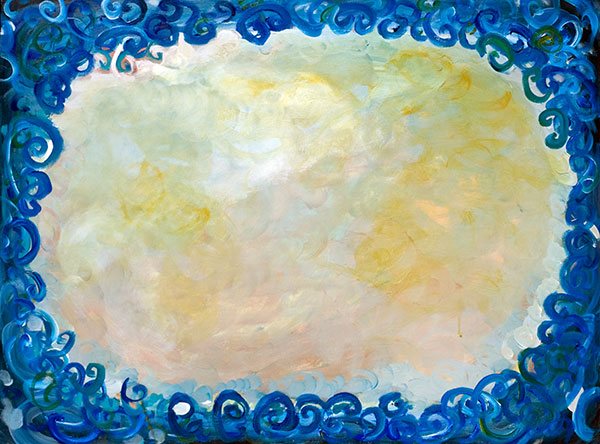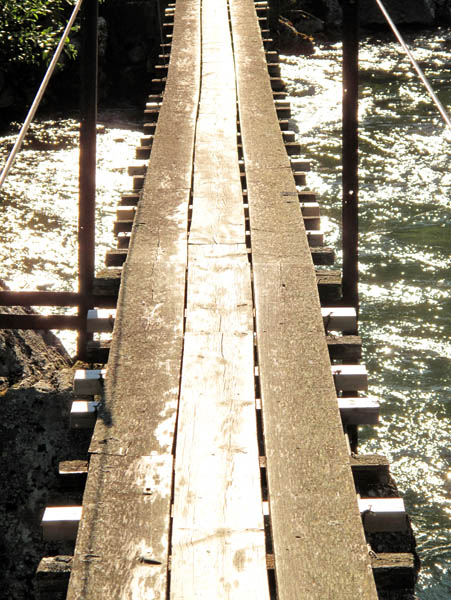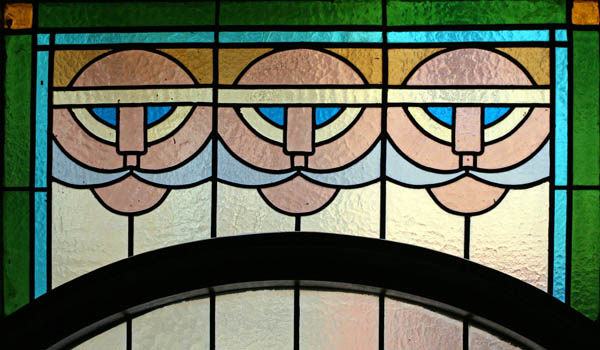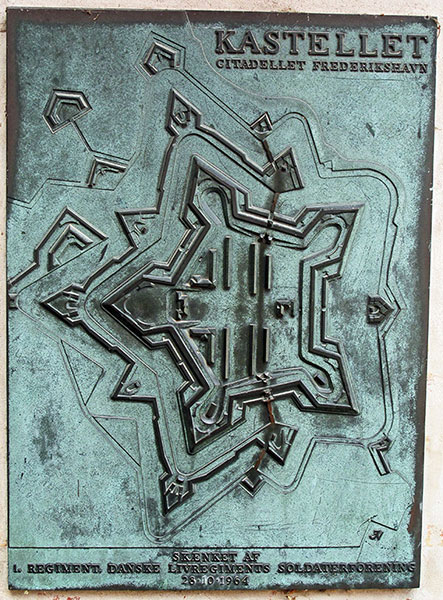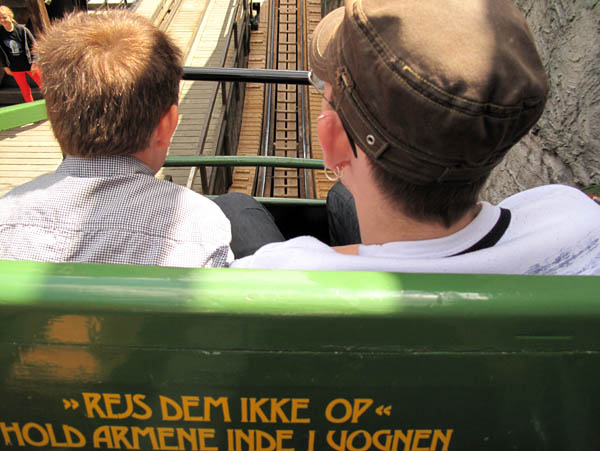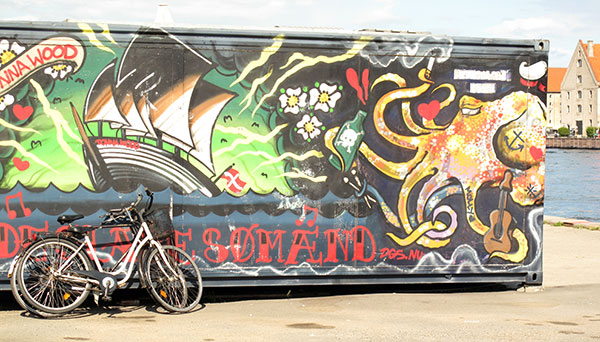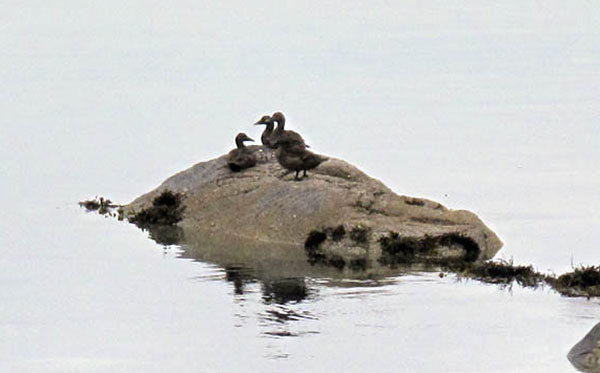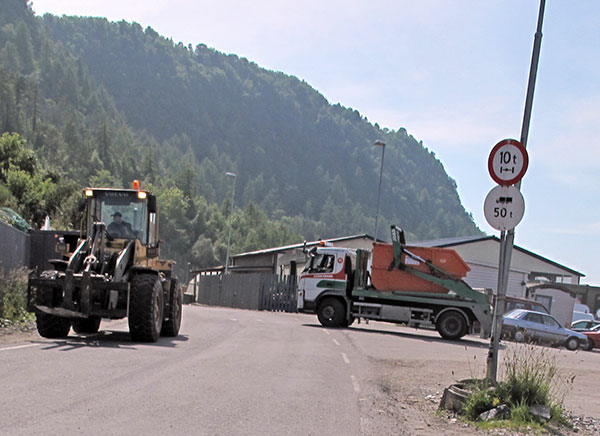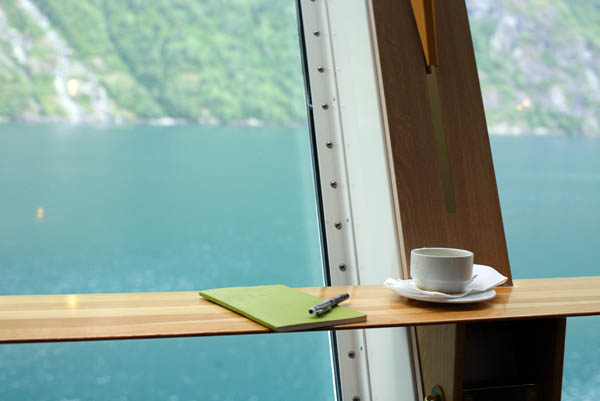[ The following is the second-to-last installment from my notes on a recent trip to Scandinavia.]
June 30, 2009.
We took a regular bus from Fjaerland to Hellesylt, and then a ferry from Hellesylt to Geiranger. I was anxious about catching the bus, but it was on time to the second, and very comfortable inside. Great views as we labored over the ridges separating one fjord from the next. In many stretched the road was what we’d call one-lane, although it had traffic in both directions. The busses and cars would pull over for each other at times.
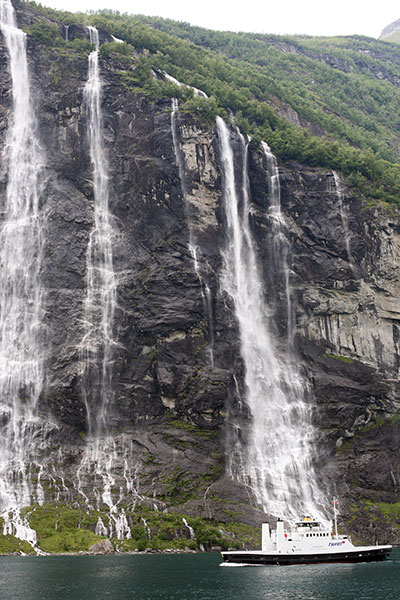
The cruise from Hellesylt to Geiranger really takes the prize. We saw dozens of really big cataracts—any one of which would be a major sight back in the continental US—and here they’re lined up on both sides of the fjord, writhing down the tree-studded cliffs that are several thousand feet high.
Abandoned farms perch on some of the nearly vertical meadows—what kind of maniac build his farm in a place like that?
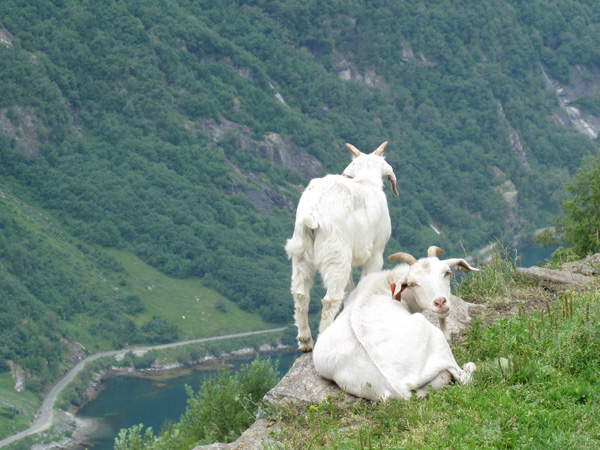
Sore hip or not, I managed to hike to the top of a thousand foot bluff this morning. It felt like being back in Zermatt. I saw lots of ferns and rushing streams. The trees are mostly aspens. Some bell-collared sheep were in the thickets, peering suspiciously at me. And at the top, goats lolled with gratifying recklessness at the very edge of a towering drop. On the way back, I walked along the edge of a field, quite lovely with a barn and a cliff in the background.
The exercise made me happy, and I started singing a song that I heard on the Mickey Mouse Club show forty years ago, a song about Donald Duck’s global fame. The song, as I recall it, was presented in what may well have been a Norwegian accent. “Kvak kvak kvak, Donald Duck, watch him do his stuff. Kvak kvak kvak, Donald Duck, now he’s had enough.” I videoed myself performing this number.
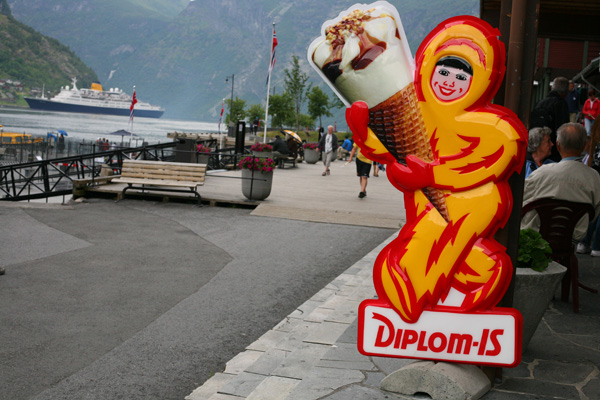
Now I’m limp and tired from the hike. Waiting on the dock for a lighter for the large Hurtigruten ship, which we plan to board for a five hour ride up the length of this fjord to the city of Ã…lesund.
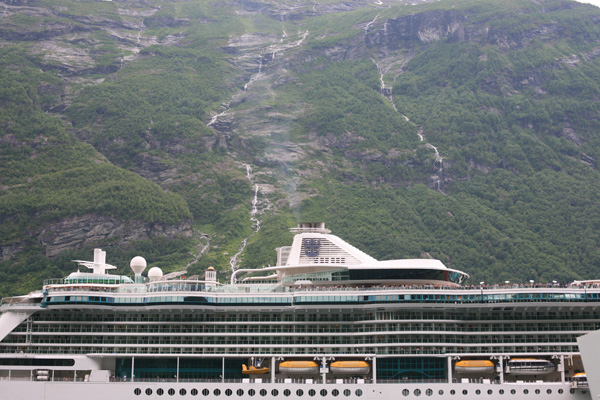
[Those tiny dots by the top railing are people!]
People are pouring off the lighters from a repellently gargantuan cruise ship called “The Jewel of the Sea,” truly the size of a starship—then flocking directly to a waiting line of tour buses. From the outside, it looks as if going on a cruise tour means doing everything in a crowd, with lots of standing in line. But it’s easier, I’m sure, than freelancing the trip, and for some people just the right thing.
I may go on a cruise myself one of these days, especially when I’m older and less mobile. Today in any case we’re riding a more reasonably-sized Hurtigruten mothership to Ã…lesund.

Great excitement riding the lighter to the Hurtigruten ship. A hatch in the big ship’s hull opens for us at water level, and we enter via a gang plank. It’s so spaceship-like, just like Han Solo landing in a hatch of the giant ship in Star Wars. One deck up was a desk like at a hotel, the “Resepsjon.” Now we’re in the panoramic view lounge on Deck 8, very comfortable, and this particular cruise ship isn’t looking so bad from the inside.

As we approach the mouth of the fjord, the view opens up to resemble the coastline of, say, Maine or Vancouver, with low islands and peninsulas on every side. But vaster, mistier, and calmer than anything I’ve seen before. The Happy Isles, the Blessed Lands of the far north.


